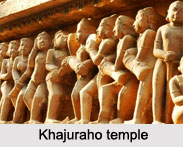 Central Indian temple sculpture has been primarily created out of stone. Some of the most beautiful pieces of sculpture are to be found engraved on stone. Whether it is the innovative rock sculpture or the massive temples, the central Indian sculptures stand out for their intricate designs and awe inspiring craftsmanship. The sculptures of the central Indian temples belong to the ancient era. Hence a lot of historical significance is also attached to these shrines.
Central Indian temple sculpture has been primarily created out of stone. Some of the most beautiful pieces of sculpture are to be found engraved on stone. Whether it is the innovative rock sculpture or the massive temples, the central Indian sculptures stand out for their intricate designs and awe inspiring craftsmanship. The sculptures of the central Indian temples belong to the ancient era. Hence a lot of historical significance is also attached to these shrines.
Different Central Indian Temple Sculptures
The early on temples were diffident looking shrines each have 4 pillars that hold up a small mandapa before an similarly small room that served as Garbhagriha. The antique temple of Uttar Pradesh, Madhya Pradesh and Rajasthan share many qualities and the most noticeable is that they are made of Sandstone. The major highlight of the central Indian temple sculpture is the Khajuraho temples and Dashavatara Vishnu Temple. The sculptors have breathed life into the listless stones. The sculptures, whether erotic or religious, are perfect in shape and form. Though these sculptures are often termed erotic, the aestheticism in them remains undeniable. These temples were constructed between 10th or 11th centuries. Besides this the Deogarh Temple in Gwalior has been built following the style of Gupta architecture. The Khajuraho temples were patronized by Chandela kings. The temples at Khajuraho are all made of Sandstone. Every the towers or shikhara of the temple rise towering, growing in a curved pyramidal style, emphasizing the temple"s straight up push ending in a horizontal fluted disc called an Amalaka topped with a Kalasha or a vase.
This article is a stub. You can enrich by adding more information to it. Send your Write Up to content@indianetzone.com



